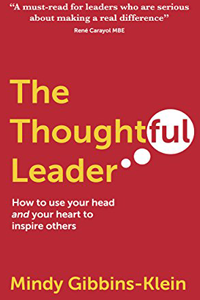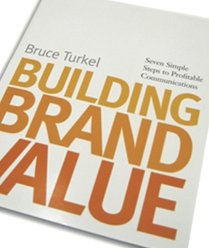
bookcategory: Marketing


WORK RULES! shows how to strike a balance between creativity and structure, leading to success you can measure in quality of life as well as market share. Read it to build a better company from within rather than from above; read it to reawaken your joy in what you do.

In the tradition of Kabul Beauty School and Start Something That Matters comes an inspiring story of social entrepreneurship from the co-founder of Kiva, the first online microlending platform for the working poor. Featuring lessons learned from successful businesses in the world’s poorest countries, Jessica Jackley’s Clay Water Brick will motivate readers to more deeply appreciate the incredible entrepreneurial potential that exists in every human being on this planet—especially themselves.

Marketing today is out of control. With all the new marketing techniques accessible to the masses, it’s becoming harder and harder to stand out from the crowd. The result is more and more messages, hitting us more often in new and more intrusive ways. For customers, it’s a lot of noise.
Through her work with a wide range of organizations from small companies to professional service providers to Fortune 500 companies, Linda Popky has developed Dynamic Market Leverage™, an approach to help cut through the clutter, stand out, and effectively build business.
Marketing Above the Noise takes a contrarian approach by not focusing on social media, digital marketing, or other new tactics, and instead helping organizations understand:
- -The critical upfront work needed to really understand customers, markets and unmet needs
- -The value of consistent, focused messaging
- -Why empowering employees to effectively represent the brand is so critical
- -How to thrive in an age of user-generated content and customer driven marketing
Why it’s key not to confuse selling with installing
The book introduces the Dynamic Market Leverage Model, which measures marketing clout by looking at eight core marketing disciplines and five additional Leverage Factors that can help an organization focus on key aspects of their marketing function that will provide the most significant return on their marketing investment.
Today’s businesses need to stop trying to keep pace with the latest and greatest marketing tactics and instead focus on developing those long term strategies that build customer loyalty and convince prospects to buy. Yes, businesses need to be aware of and integrate new media and new approaches, but they need to do it in a way that makes sense for the business. They need to maintain a clear focus above the din of the roaring crowd—above the marketing fray.
Most organizations don’t have the luxury of being able to start from a clean slate to develop new marketing strategies. They have existing customers, existing channels and relationships, existing ways of doing business. With limited resources, they’re not able to integrate every new tactic as it appears and they’re not sure how to prioritize all of these options.
What’s needed is a timeless framework—a way of looking at marketing as tied to both business growth and the building and nurturing of ongoing customer engagement. It’s time to move the focus from social media and evangelists, sales and marketing alignment, and the latest hot cloud-based marketing tools, to what really counts: convincing customers to trust you with their business—not just once, but time and time again.

Have you ever wondered why almost identical products sell for vastly different sums just because of the name or logo printed on them? Why companies spend millions of dollars on advertising that seldom shows the product they want you to buy? Why some people get higher salaries for doing the exact same job as their lesser-paid peers? Have you ever wondered how you could put the answer to these questions to work for you? Bruce Turkel explains these and other ideas with simple, clear explanations, anecdotes, and illustrations. He explores the design of German car logos, Haitian President Aristede’s speech to the Summit of the Americas and how his son got an A in his fifth grade music class to demonstrate how companies and individuals can build their own brand value.
Turkel practices what he preaches by breaking down a complicated, difficult-to-understand practice into an easy-to-understand guide. His friendly and entertaining delivery and generous information in speaking and writing is what charms his audiences and leaves them feeling richer for being exposed to the experiences Turkel shares. Turkel’s seven simple steps:
- 1. All About Them
- 2. Hearts Then Minds
- 3. Make It Simple
- 4. Make It Quick
- 5. Make It Yours
- 6. All Five Senses
- 7. Repeat. Repeat
Provide a universal framework for communicating what you do and making it much more valuable.

For any business owner, franchise operator, or marketing executive who seeks to increase sales while lowering marketing costs, Jeff Slutsky offers a new way of thinking. In this indispensable guide to getting more bang for your buck, the well-known marketing consultant tells business managers to think tactically and locally — using nontraditional, highly targeted forms of marketing and advertising.
The tactics, ideas, approaches, and strategies in Street Fighter Marketing Solutions are geared for the bewildering new challenges that confront business- people in the new hypercompetitive, advertising-polluted environment in which they must seek profits.
With pressures from “big box” retailers, internet competition, and a glut of other immediate competitors, businessmen and businesswomen need a war chest of proven ideas and strategies to help them thrive. Additionally, local businesses suffer from advertising price increases despite eroding audiences from the local media, especially newspapers, radio, and TV. This book could be the answer to your current and future marketing problems.
You’ll learn how to mold and manipulate traditional advertising methods while supplementing or supplanting them with alternative, novel techniques for lower cost and higher reward.
National and regional corporations who sell their products and services through a network of local retailers, franchisees, or dealers will also benefit greatly from this book. It will provide them with an easy-to-understand blueprint on how to develop, roll out, and maintain a practical, money-saving, sales-generating Street Fighter Marketing program throughout their organization.
In a book full of success stories, Slutsky discusses in a clear, practical, straightforward manner how Street Fighter Marketing techniques can work for you. The first step to growing your market share may well be to spend a few hours in the company of one of the nation’s most savvy and engaging business tacticians.
For more information and a downloadable video, visit www.streetfightermarketing.com.

Play predates the development of human culture and our brains are hard-wired to use play as a tool to accelerate learning, strategically explore unfamiliar environments and develop collaborative social connections. Games are human created, formalized structures and processes designed to maximize engagement and get the most out of the “play” impulse. In fact, gaming comes so naturally to us we don’t even notice it for what it is. Two examples of large scale gaming structures include our educational and political systems. Going deeper into understanding how gaming structures work, and intentionally applying those mechanics can give us an advantage when designing experiences meant to engage our members in the work of our associations.
Although games have been with us since we first learned to scratch marks on small rocks, what is new is the impact the internet and technology is having on games and players alike. What was simple activity in the past, is rapidly turning into a large scale social phenomenon. At some point the term “gamer” will lose it relevancy and we will recognize gamers for what they are – an increasingly sophisticated class of experience consumers. Games are the first mass media of the 21st century and gaming literacy is an essential skill all executives, staff and volunteers need to develop in order to attract, appeal to and invite a new generation of players to play the association game. In this book, we take a simple, practical approach to helping you and your volunteers take these ideas one step farther.
By using these 42 rules from Shelly Alcorn and Willis Turner,, you will be able to use simple gaming mechanics to increase member engagement, improve educational outcomes and build community in your industry or profession.


In today’s business world, it takes more than a website to stay competitive. The smartest, most successful companies are using radically new membership models, subscription-based formats, and freemium pricing structures to grow their customer base—and explode their market valuation—in the most disruptive shift in business since the Industrial Revolution. This is The Membership Economy from Robbie Kellman Baxter. Written by an expert consultant, this groundbreaking book will show you how to turn ordinary customers into members for life. Learn how to:
- Turn digital subscriptions into forever sales
- Build an online community your customers will love
- Develop new loyalty programs that really pay off
- Transform freemium users into superusers
- Create a self-generating revenue stream
- Keep memberships and profits growing for years to come
Whether you’re a small business with limited resources, an established company using a traditional business model, or a hungry start-up who wants a bigger bang for your buck, this comprehensive guide provides a wealth of membership-building options to suit every need. You’ll learn the best-kept secrets of top industry leaders, from global giants like Am Ex and Weight Watchers to smaller dot-com successes like SurveyMonkey and Pandora. You’ll find proven strategies for creating membership programs for everything from vacation timeshares and car rentals to video streaming and Software-as-a-Service. Most importantly, you’ll discover what works, and what doesn’t, from some of the key players in the new membership economy. It’s not about ownership; it’s about access, options, and freedom. When you join forces with your customers, membership has its rewards—for you, your company, and your continued success.

The speed of innovation and change in B2B marketing has never been greater. And the need for clarity for a blueprint, for a guide to what’s really working and how to apply it specifically to increase sales pipeline growth, velocity and conversion – is what you’ll find in this book. It covers a lot of ground, but quickly. With a comprehensive view of the sales and marketing pipeline, but done in quick bursts with lots of specific, actionable ideas, strategies and tactics you can put to work right away.

It’s easy for today’s leaders to fall into the trap of accepting trendy big-data, social media, and mobile technology initiatives as the norm: “cool” initiatives that generate only superficial results. Seduced by their promise but concerned by their complexity, many leaders allow these initiatives to be implemented in isolation—segregated from what has traditionally driven organizational success and far removed from tangible business results.
Big Social Mobile shows how big data, social media, and mobile technology can be used differently. Integrated into each other and into the enterprise itself, these digital initiatives can deliver tangible value, drive the achievement of strategic objectives and even create competitive advantage. David Giannetto shows business, marketing, and technology leaders how to make the most of these initiatives, dispelling the common beliefs that divide traditional organizational efforts from these new digital efforts, traditional enterprise data from big data, and today’s new social consumer from enterprise functions. The result is a socially aware, information-empowered organization designed to reinforce rather than diffuse its connection to consumers, provide a consistent experience across all channels and influence consumer behavior to its best advantage. Big Social Mobile highlights the importance of defusing fragmentation and connecting what feels very new—the digital revolution and the big, social, mobile initiatives that accompany it—to a more traditional business perspective. Outlining straightforward methods that connect the digital world to the people, process, technology, and information within an organization, Giannetto uses case studies and personal experience to demonstrate how to create a Big Social Mobile enterprise that operates, communicates, and interacts seamlessly across both the physical and digital landscape today’s consumers inhabit.
Big Social Mobile is for today’s leaders interested in harnessing the combined power of big data, social media, and mobile technology within their organization to achieve significant, tangible business results. Giannetto provides eye-opening advice and direction for those who sense that a forward-thinking mindset and an integrated approach are necessary to remain competitive in the new social economy.

